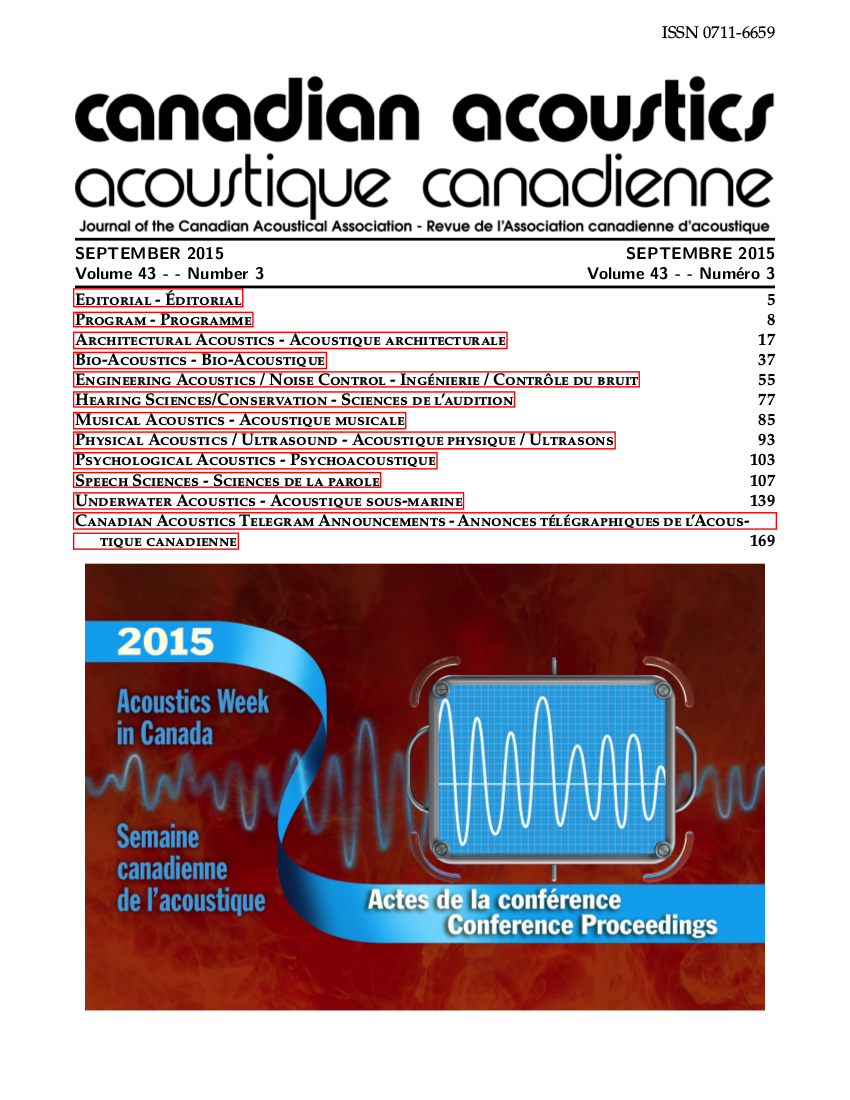The timing of Accentual Phrases in read and spontaneous speech: data from Acadian French
Abstract
While comparisons of read and spontaneous speech materials note prosodic differences such as the number and position of pauses and the number and position of tone unit boundaries, only a few studies have examined the rhythm of these two speech styles. In these studies, rhythm is measured with metrics based on the durations of segmental – that is, vocalic and consonantal – intervals. In this paper we consider the timing of larger units known as Accentual Phrases (APs), which are groups of syllables that are demarcated by a primary stress. Our study uses AP-based rhythm metrics to examine differences between read and spontaneous speech materials.
Data are from sociolinguistic interviews conducted with 12 speakers of a variety of Acadian French spoken in northeastern New Brunswick. Each speaker produced both reading and spontaneous styles. Approximately 34 minutes of speech – about 2,400 APs – were analyzed. APs were identified by two native speakers. Calculations of AP-based rhythm metrics were made with the same equations that are used for segmental interval measures (delta-AP, Varco-AP) and for segmental pairwise variability measures (nPVI-AP, rPVI-AP).
APs in spontaneous speech are shorter in duration than those in read speech, even though the average number of syllables per AP is similar in both styles. APs in spontaneous speech also have greater durational variability, and they show greater inter-speaker variation. Discrimination analysis suggests that the normalized metrics –Varco-AP, nPVI-AP – contribute most to distinguishing between the two styles. One implication of this study is that AP-based rhythm metrics can contribute to a framework for the comparison of read and spontaneous speech materials. More generally, the study confirms that there are interesting patterns of speech timing that are located at a level above vocalic and consonantal segments.
Additional Files
Published
How to Cite
Issue
Section
License
Author Licensing Addendum
This Licensing Addendum ("Addendum") is entered into between the undersigned Author(s) and Canadian Acoustics journal published by the Canadian Acoustical Association (hereinafter referred to as the "Publisher"). The Author(s) and the Publisher agree as follows:
-
Retained Rights: The Author(s) retain(s) the following rights:
- The right to reproduce, distribute, and publicly display the Work on the Author's personal website or the website of the Author's institution.
- The right to use the Work in the Author's teaching activities and presentations.
- The right to include the Work in a compilation for the Author's personal use, not for sale.
-
Grant of License: The Author(s) grant(s) to the Publisher a worldwide exclusive license to publish, reproduce, distribute, and display the Work in Canadian Acoustics and any other formats and media deemed appropriate by the Publisher.
-
Attribution: The Publisher agrees to include proper attribution to the Author(s) in all publications and reproductions of the Work.
-
No Conflict: This Addendum is intended to be in harmony with, and not in conflict with, the terms and conditions of the original agreement entered into between the Author(s) and the Publisher.
-
Copyright Clause: Copyright on articles is held by the Author(s). The corresponding Author has the right to grant on behalf of all Authors and does grant on behalf of all Authors, a worldwide exclusive license to the Publisher and its licensees in perpetuity, in all forms, formats, and media (whether known now or created in the future), including but not limited to the rights to publish, reproduce, distribute, display, store, translate, create adaptations, reprints, include within collections, and create summaries, extracts, and/or abstracts of the Contribution.


